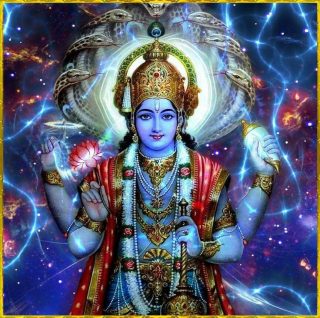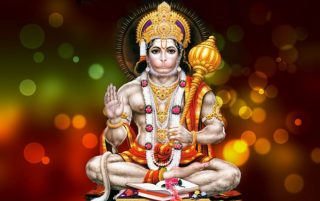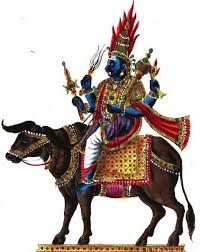Hindu Gods and Goddesses
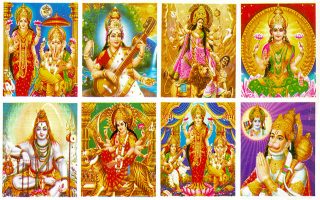
Welcome to this topic entitled Hindu Gods and Goddesses.
Today we are going to discover the 1st generation and the 2nd generation of Gods and Goddesses.We are going to see as well their functions Hindu mythology and how it began. However we shall take into accounts various sources and myths to fully understand the Hindu Gods and Goddesses. So let’s get it on!
Intended learning outcomes (ILO)
At the completion of this study, the students should be able to:
- Describe each of the Gods and Goddesses of the Hinduism pantheon.
The highest Gods in Hinduism (1st generation)
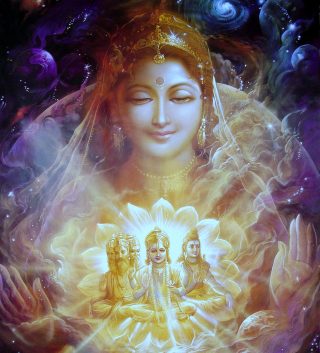
Just a quick one, In Sanathana Dharma (“Hinduism”), the concept of the creation of the cosmos goes as follows: Originally the universe was in the shape of an egg, referred to as “Brahma Anda” (Brahma means “universe” and Anda means “egg”). Then the Goddess manifested herself. She is referred to as “Maatha” (“mother”) and “Adi Shakthi” (Adi means “first” and Shakthi means “energy” and “strength” put together). She created a trinity of masculine, named “Brahma,” “Vishnu” and “Maheshwara” (or “Shiva”).
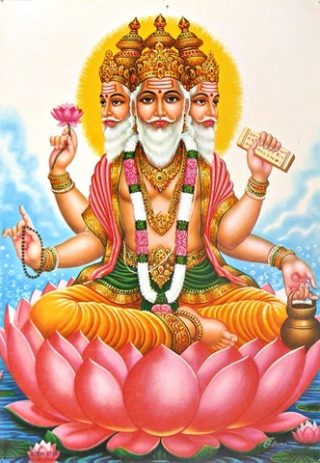 Brahma, the creator of life on earth, is one of the Trimurti, the three gods at the center of the Hindu pantheon (along with Shiva and Vishnu). In the early Vedic texts, the creator god was Prajapati, but over time Brahma took the older god’s place in many myths about the creation of the universe. He is also a teacher who taught humans about nature of self and importance of virtue.
Brahma, the creator of life on earth, is one of the Trimurti, the three gods at the center of the Hindu pantheon (along with Shiva and Vishnu). In the early Vedic texts, the creator god was Prajapati, but over time Brahma took the older god’s place in many myths about the creation of the universe. He is also a teacher who taught humans about nature of self and importance of virtue.
Vishnu, the second member of the Trimurti, is the preserver or protector of life. His attributes are mercy and goodness. Some Hindus regard Vishnu as the supreme being and Brahma and Shiva as aspects of him. Shiva, descended from the old Vedic storm god Rudra, is the third member of the Trimurti. He is the avenging and destroying god, but his destruction allows new creation to begin. Sometimes Shiva is portrayed as a dancer who directs the movements of the universe.
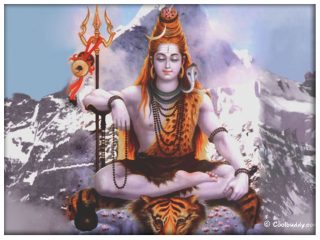 Shiva is the third member of the Hindu Trinity, tasked with destroying the universe in order to prepare for its renewal at the end of each cycle of time. Shiva’s destructive power is regenerative: It’s the necessary step that makes renewal possible.Hindus customarily invoke Shiva before the beginning of any religious or spiritual endeavor; they believe that any bad vibrations in the immediate vicinity of worship are eliminated by the mere utterance of his praise or name.
Shiva is the third member of the Hindu Trinity, tasked with destroying the universe in order to prepare for its renewal at the end of each cycle of time. Shiva’s destructive power is regenerative: It’s the necessary step that makes renewal possible.Hindus customarily invoke Shiva before the beginning of any religious or spiritual endeavor; they believe that any bad vibrations in the immediate vicinity of worship are eliminated by the mere utterance of his praise or name.
In order that their assignments (Brahma, Vishnu and Shiva) are executed efficiently, Maatha created three Goddesses, named “Saraswathi,” “Lakshmi” and “Durga Devi” (also transliterated “Parvati“)
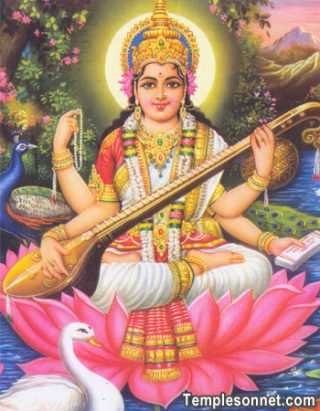 Saraswati is the manifestation of intellect, art and music. She is the partner of Brahman. She is also referred as the goddess of speech. She is depicted seated in a beautiful lotus, wielding a Veena, the Vedas and a rosary. Her four arms intrinsic elements of the human personality. Manas (mind), buddhi (intellect) , chitta (Consciousness) and ahamkar (ego).
Saraswati is the manifestation of intellect, art and music. She is the partner of Brahman. She is also referred as the goddess of speech. She is depicted seated in a beautiful lotus, wielding a Veena, the Vedas and a rosary. Her four arms intrinsic elements of the human personality. Manas (mind), buddhi (intellect) , chitta (Consciousness) and ahamkar (ego).
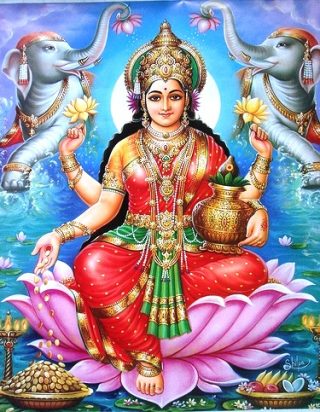 Lakshmi is the goddess of good fortune, wealth, and well-being. As the consort of Vishnu, she plays a role in every incarnation. (She is Sita, wife of Rama; Rukmini, wife of Krishna; and Dharani, wife of Parashu Rama, another avatar of Vishnu.)
Lakshmi is the goddess of good fortune, wealth, and well-being. As the consort of Vishnu, she plays a role in every incarnation. (She is Sita, wife of Rama; Rukmini, wife of Krishna; and Dharani, wife of Parashu Rama, another avatar of Vishnu.)
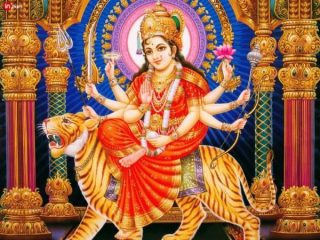 Durga Devi is a powerful, even frightening goddess who fights fiercely in order to restore dharma (moral order). Yet, while Durga is terrifying to her adversaries, she is full of compassion and love for her devotees.
Durga Devi is a powerful, even frightening goddess who fights fiercely in order to restore dharma (moral order). Yet, while Durga is terrifying to her adversaries, she is full of compassion and love for her devotees.
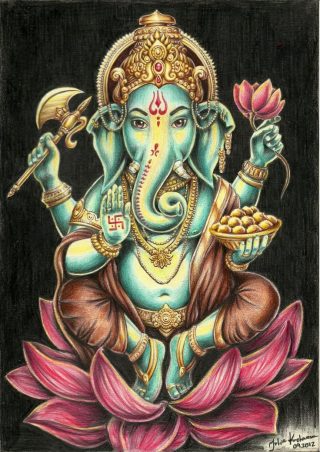 Ganapati, also known as Ganesha, is Shiva’s first son. Lord Ganapati, who has an elephant head, occupies a very special place in the hearts of Hindus because they consider him the Remover of Obstacles. Most Hindu households have a picture or statue of this godhead, and it’s not uncommon to see small replicas of Ganapati hanging from rearview mirrors of cars and trucks!
Ganapati, also known as Ganesha, is Shiva’s first son. Lord Ganapati, who has an elephant head, occupies a very special place in the hearts of Hindus because they consider him the Remover of Obstacles. Most Hindu households have a picture or statue of this godhead, and it’s not uncommon to see small replicas of Ganapati hanging from rearview mirrors of cars and trucks!
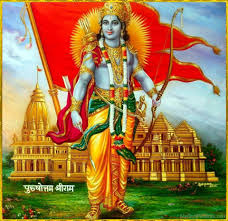 Rama is one of the most beloved Hindu gods and is the hero of the Hindu epic called the Ramayana. He is portrayed as an ideal son, brother, husband, and king and as a strict adherent to dharma. Millions of Hindus derive satisfaction from reading and recalling Rama’s trials and tribulations as a young prince who was exiled from his kingdom for 14 years.
Rama is one of the most beloved Hindu gods and is the hero of the Hindu epic called the Ramayana. He is portrayed as an ideal son, brother, husband, and king and as a strict adherent to dharma. Millions of Hindus derive satisfaction from reading and recalling Rama’s trials and tribulations as a young prince who was exiled from his kingdom for 14 years.
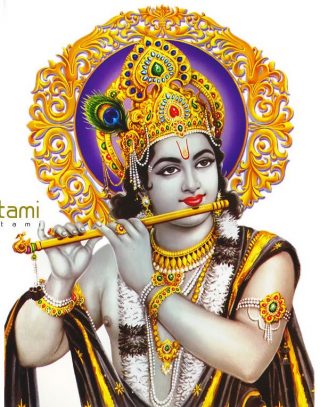 Krishna is one of Hindu god’s name is known and recognized throughout the world. Hindus identify Krishna as the teacher of the sacred scripture called the Bhagavad Gita and as the friend and mentor of prince Arjuna in the epic the Mahabharata.
Krishna is one of Hindu god’s name is known and recognized throughout the world. Hindus identify Krishna as the teacher of the sacred scripture called the Bhagavad Gita and as the friend and mentor of prince Arjuna in the epic the Mahabharata.
For his devotees, Krishna is a delight, full of playful pranks. But most of all, Lord Krishna’s promise to humanity that he will manifest himself and descend to earth whenever dharma declines has sustained Hindu belief in the Supreme Being over thousands of years.
Vedic Gods and Goddesses (2nd Generation)
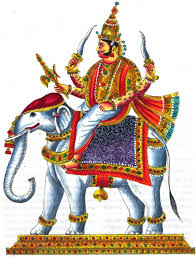 Indra is the King of Gods and ruler of the heavens. He is the god of thunder and rain, a great warrior, a symbol of strength and courage. At many times, Indra lost control over the heavens to the demons. So he became always watchful to destroy any man or demon that become too powerful.
Indra is the King of Gods and ruler of the heavens. He is the god of thunder and rain, a great warrior, a symbol of strength and courage. At many times, Indra lost control over the heavens to the demons. So he became always watchful to destroy any man or demon that become too powerful.
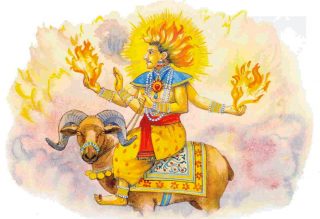 Agni holds a special place in Hindu fire ritual to this day as the sacrificer (the priest who performs the ceremony); the sacrifice (the ritual fire and the offerings made into it); and the witness to all rites. He is known as the fire god, he manifest fire upon earth.
Agni holds a special place in Hindu fire ritual to this day as the sacrificer (the priest who performs the ceremony); the sacrifice (the ritual fire and the offerings made into it); and the witness to all rites. He is known as the fire god, he manifest fire upon earth.
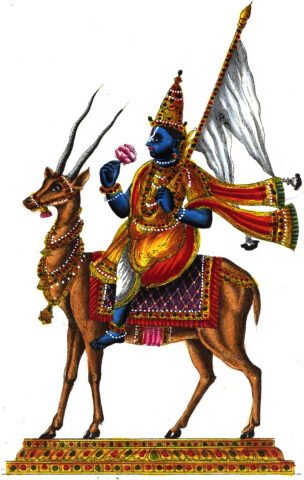 Vayu is the wind god who is described in the Vedas the lord of the Mid region. His body represents breath. As an invisible deity he forms a part o subtle realm. He figures prominently in the hymns regarding Soma’s sacrifice.They described him as friend of Soma and Indra. In the image he was depicted as blue colored god.
Vayu is the wind god who is described in the Vedas the lord of the Mid region. His body represents breath. As an invisible deity he forms a part o subtle realm. He figures prominently in the hymns regarding Soma’s sacrifice.They described him as friend of Soma and Indra. In the image he was depicted as blue colored god.
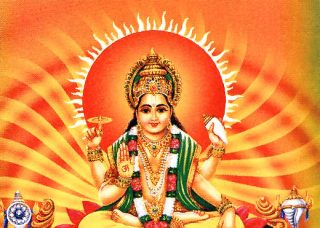 Surya (or Soorya) is a golden warrior arriving on a chariot pulled by seven white horses. He is known as the ” Sun God”. In the Vedic Hymn his referred as the “giver of the light” and the “jewel in the sky”.
Surya (or Soorya) is a golden warrior arriving on a chariot pulled by seven white horses. He is known as the ” Sun God”. In the Vedic Hymn his referred as the “giver of the light” and the “jewel in the sky”.
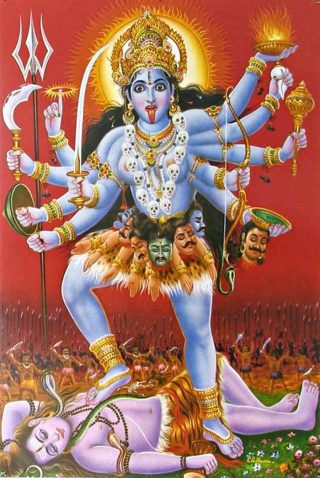 Kali is a goddess of death but She brings the death of the ego as the illusory self-centered view of reality. Nowhere in the Hindu stories is She seen killing anything but demons nor is She associated specifically with the process of human dying like the Hindu god Yama (who really is the god of death). It is true that both Kali and Shiva are said to inhabit cremation grounds and devotees often go to these places to meditate.
Kali is a goddess of death but She brings the death of the ego as the illusory self-centered view of reality. Nowhere in the Hindu stories is She seen killing anything but demons nor is She associated specifically with the process of human dying like the Hindu god Yama (who really is the god of death). It is true that both Kali and Shiva are said to inhabit cremation grounds and devotees often go to these places to meditate.
Hanuman is featured in the great Hindu epic the Ramayana. He earned his path to deification by performing feats of strength, devotion, and courage while helping Rama (an avatar of Vishnu) in countless exciting incidents. Referred as the “Monkey God”.
Yama is the god of death. Yama means “restraining one”, According to the legends he was first to die and depart in heaven. Subsequently, he became the lord of the underworld called “Yamaloka”. He is known for his knowledge for judgement and fairness in punishing the sinners.
References:
http://www.mythencyclopedia.com/Go-Hi/Hinduism-and-Mythology.html
http://freethoughtnation.com/the-concept-of-creation-in-hinduism/
http://www.hinduwebsite.com/hinduism/pantheon.asp
